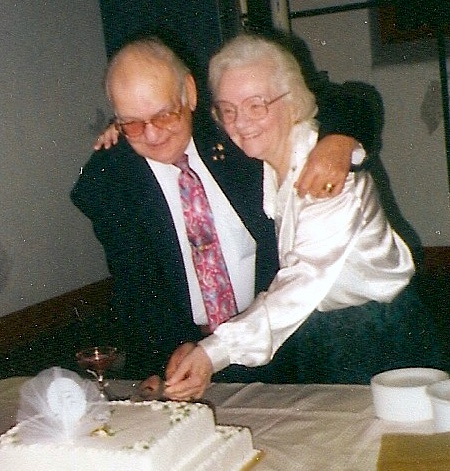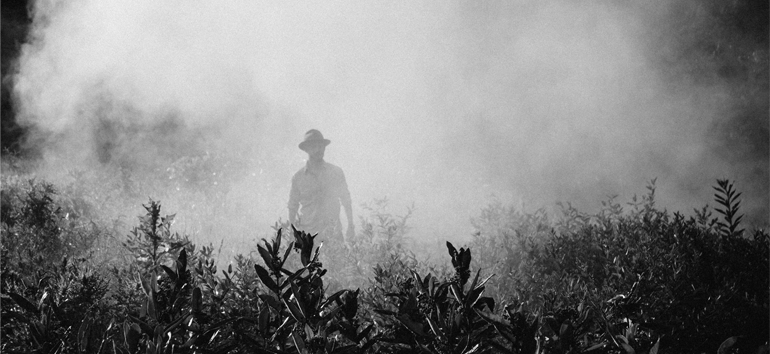Sign up for the Family Tree Newsletter! Plus, you’ll receive our 10 Essential Genealogy Research Forms PDF as a special thank you.
Get Your Free Genealogy Forms
"*" indicates required fields
Fact or Fiction in Family History
When it comes to family history, we have a tendency to emphasize researching the facts. That’s not a bad thing, of course – but when it comes to oral history, how the story is told is just as valuable as the facts.
In honor of Sweetest Day, let’s take a look at a fun example of this through a video that I created in honor in my grandparents.
In the case of Carl Davies and Dorothy Ashford, having two very distinct perspectives of the same event leads to some fantastic insight into their relationship – and their personalities, something that can be hard to capture when the facts are all we have to go on.
Carl and Dorothy met at Tacoma Pool, which used to be part of the riverfront beaches in Dayton, Kentucky, along the Ohio river.
But while Carl was home on leave from the army, and before he was shipped off to England, he and his buddies went to Tacoma pool. Likewise, Dorothy was there with her friends, and supposedly wearing a racy red bikini or two-piece. One of her friends knew one of his friends and they were introduced.
But here, their recollections diverge.
Dorothy couldn’t swim; indeed, she refused to go into water more than waist-deep. On the other hand, Carl spent several summers as a life guard when he was a teenager. Dorothy claimed that she was standing in the water when Carl swam into her under water, knocking her off her feet to get attention.
Carl, on the other hand, claims that Dorothy pretended to be drowning so he’d save her. Which, of course, he so chivalrously did.
Who’s telling the truth? We must examine the story, evaluate the sources, and the available evidence.
Let’s start with what we can confirm. We can establish a rough time frame for when this occurred based on Carl’s available and known military records.
- Carl’s Army enlistment date was 1 October, 1942.
- He was part of the 500th Medical Collecting Company and took part in Operation Overlord on 6 June, 1944.
- His release date was 5 December, 1945.
- They married on 19 January, 1946.
This information can be verified via WWII enlistment records, social security administration records, and other documents and establishes one of three summers they could have met: 1943, 1944, and 1945. We can rule out the summer of 1944, when Carl was in France, and later, other parts of Europe, and we know they were together for the duration of Carl’s time in Europe, so that puts the most likely time frame they met at Tacoma pool the summer of 1943.
Unfortunately, Dorothy was not one to keep a lot of documents or items of sentimental value, so there are no letters or many photographs that have survived that would establish their timeline prior to their wedding. We do know that while she may have been wearing a daring two-piece bathing suit, it was not a bikini, which did not come into fashion until after the war was over.
So who is more likely to have been the more reliable source: Carl or Dorothy? As it turns out, neither can be trusted entirely not to embellish the facts. Both had something to gain by their actions, so taking them at their word – and especially over 50 years of playfully arguing the point, and chances are, the truth is somewhere in the middle.
Who was telling the truth ceases to matter in light of what we learn about their personality and their relationship. The conflict is playful and flirtatious. This was a couple who shared a sense of humor, and the day they met had an immediate and lasting impact upon both of them.
However, the story still contains elements that can lead to interesting clues and information about your family history. From the story, we establish some dates and locations in their timeline and incorporate history and cultural context into the details. While not every detail can be established, we can establish enough of the framework to make some educated guesses, and continue to look for more details.
Analyzing the evidence you have can lead to clues and help shed light on hidden details in your family history, and this shows that all stories have a place in your genealogy research.
To learn more about how to analyze genealogical evidence, take our 4-week course at Family Tree University.
ADVERTISEMENT





